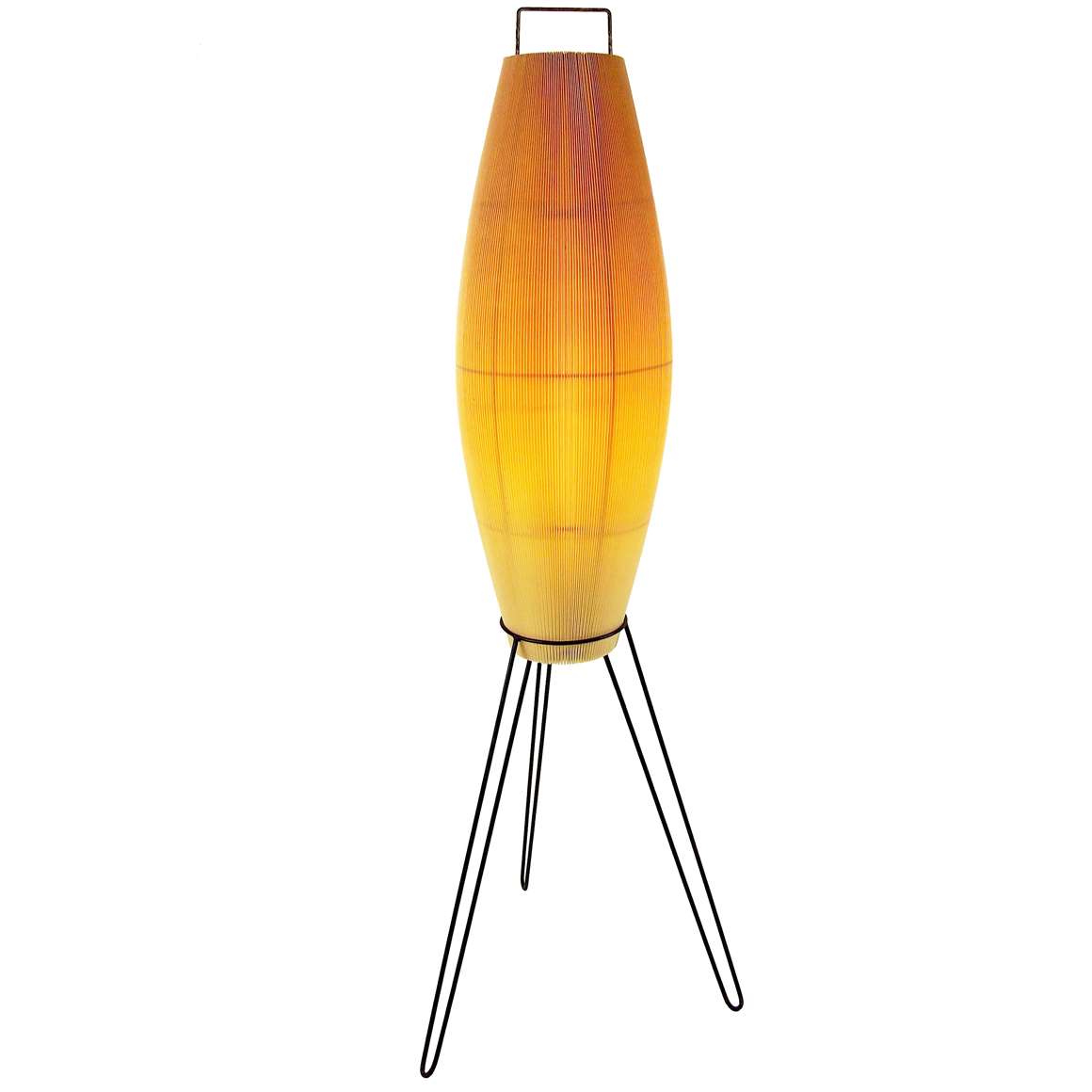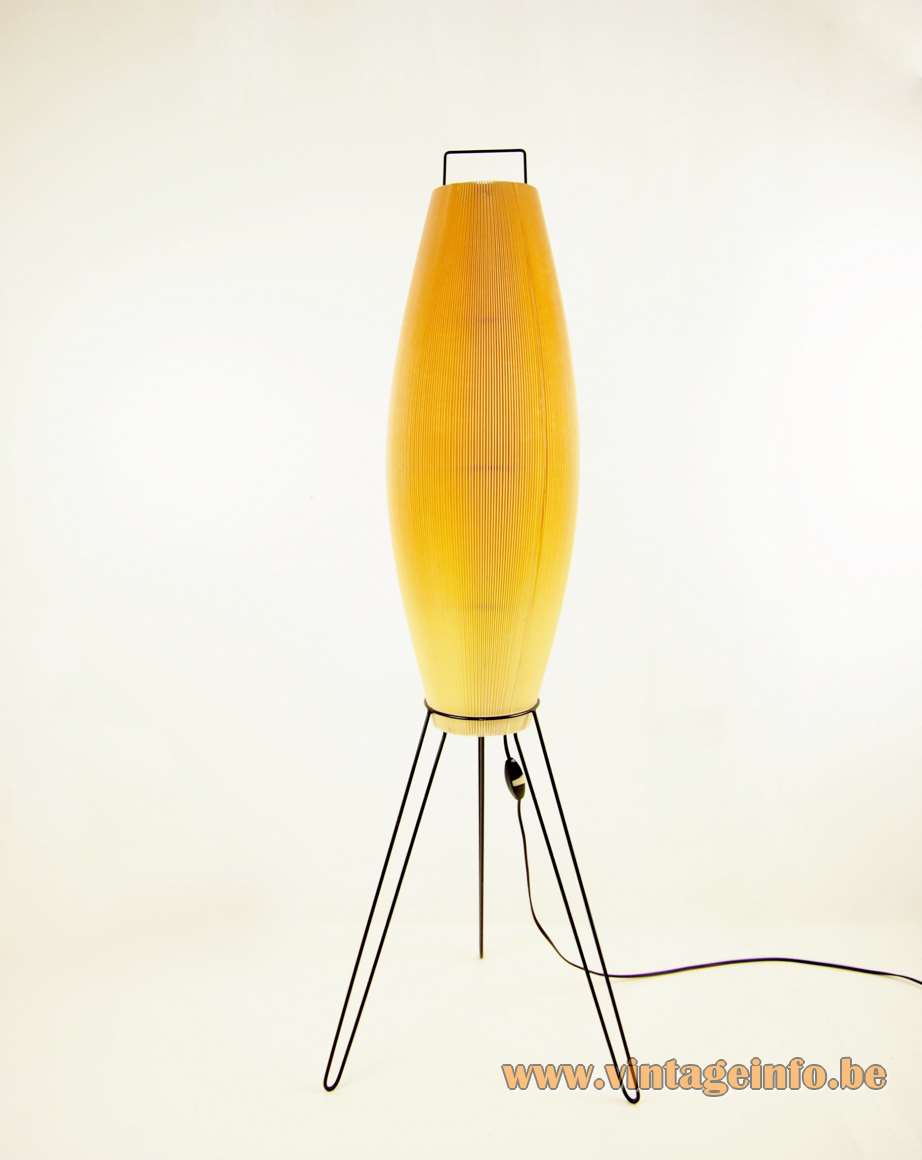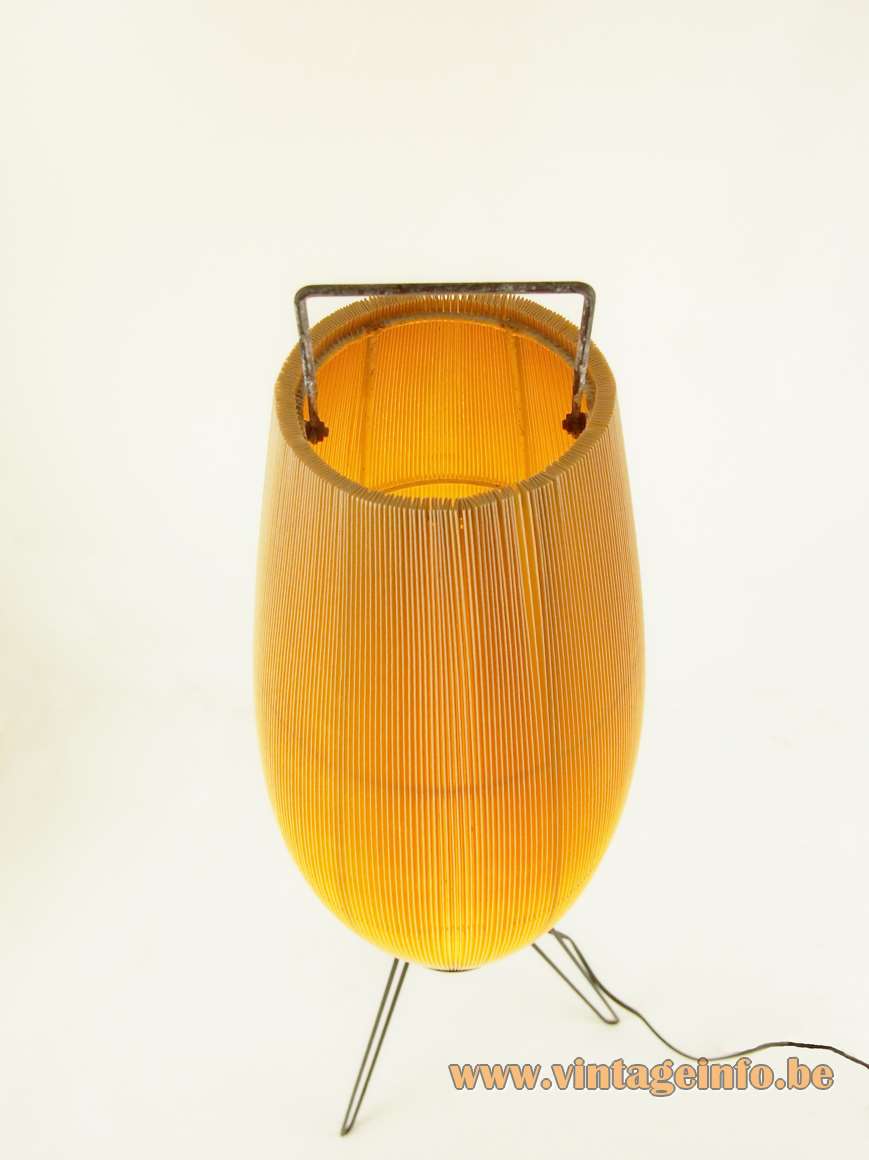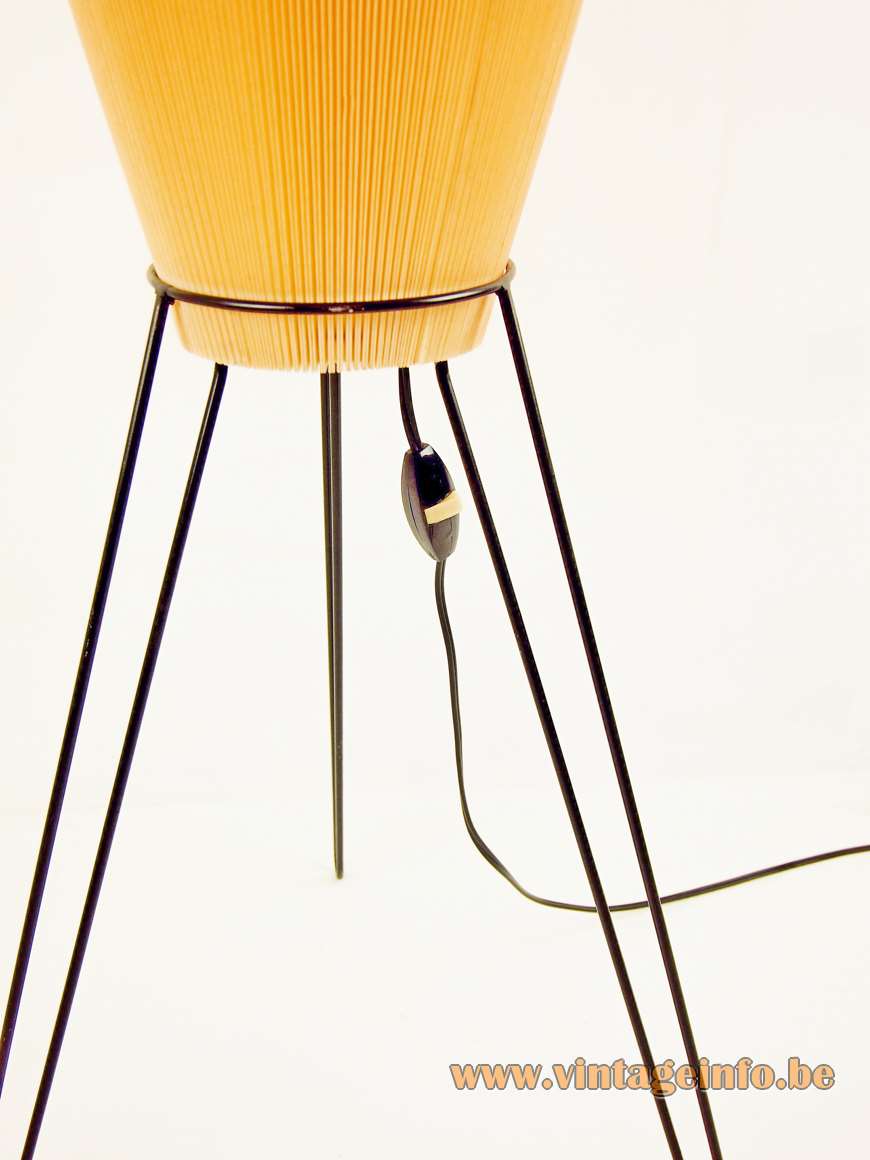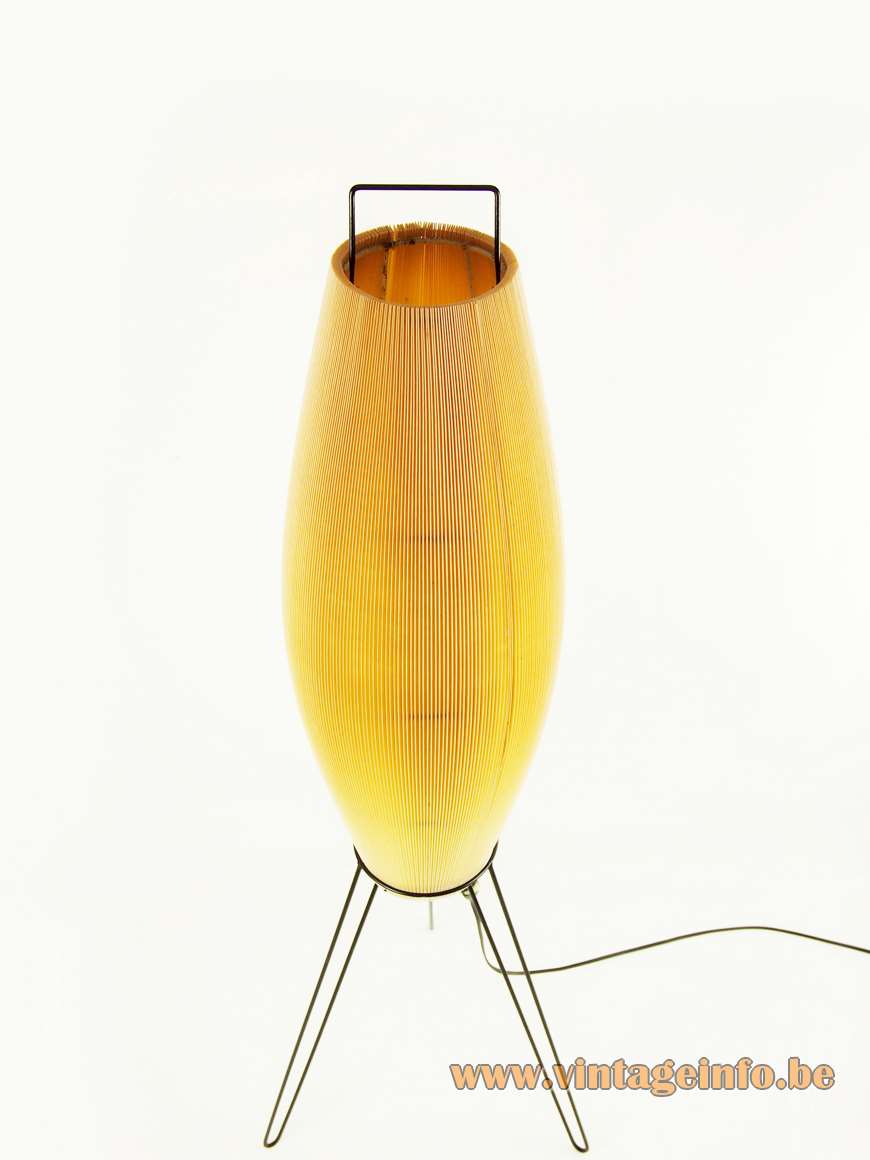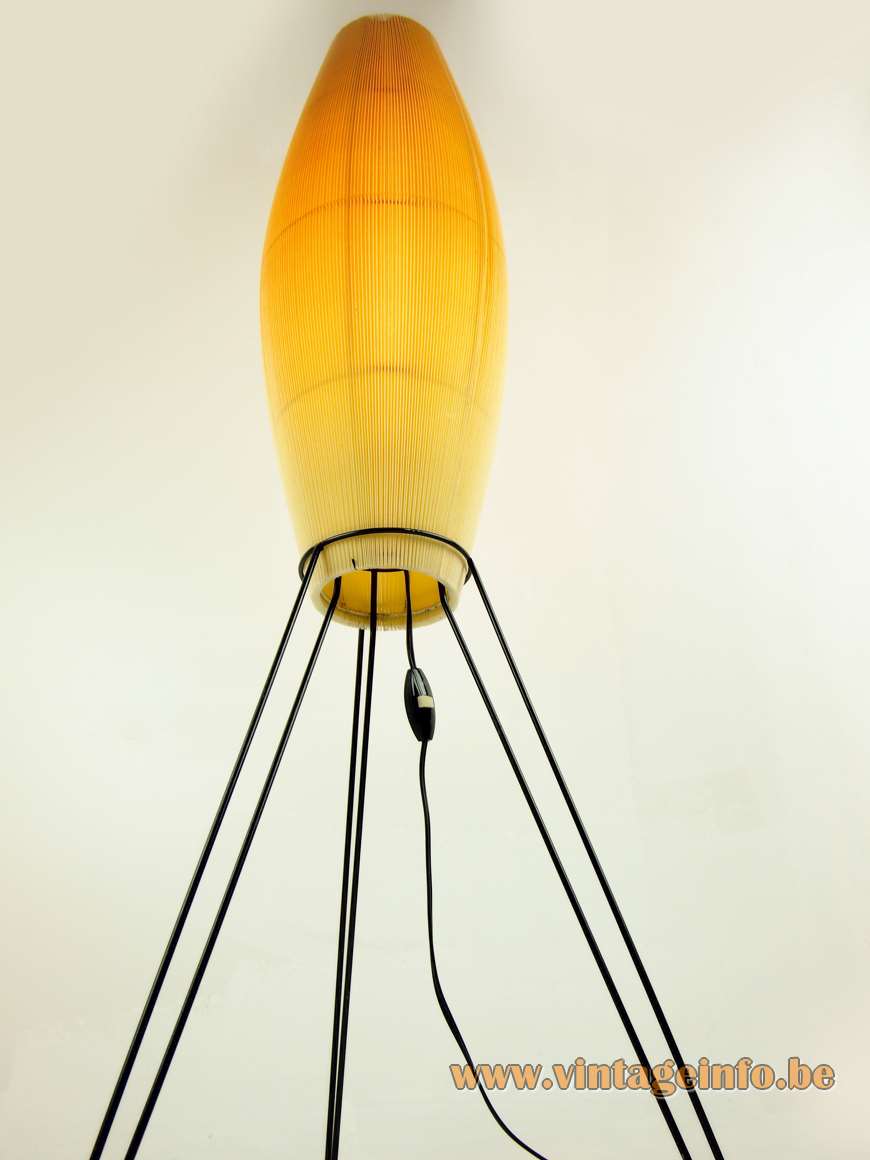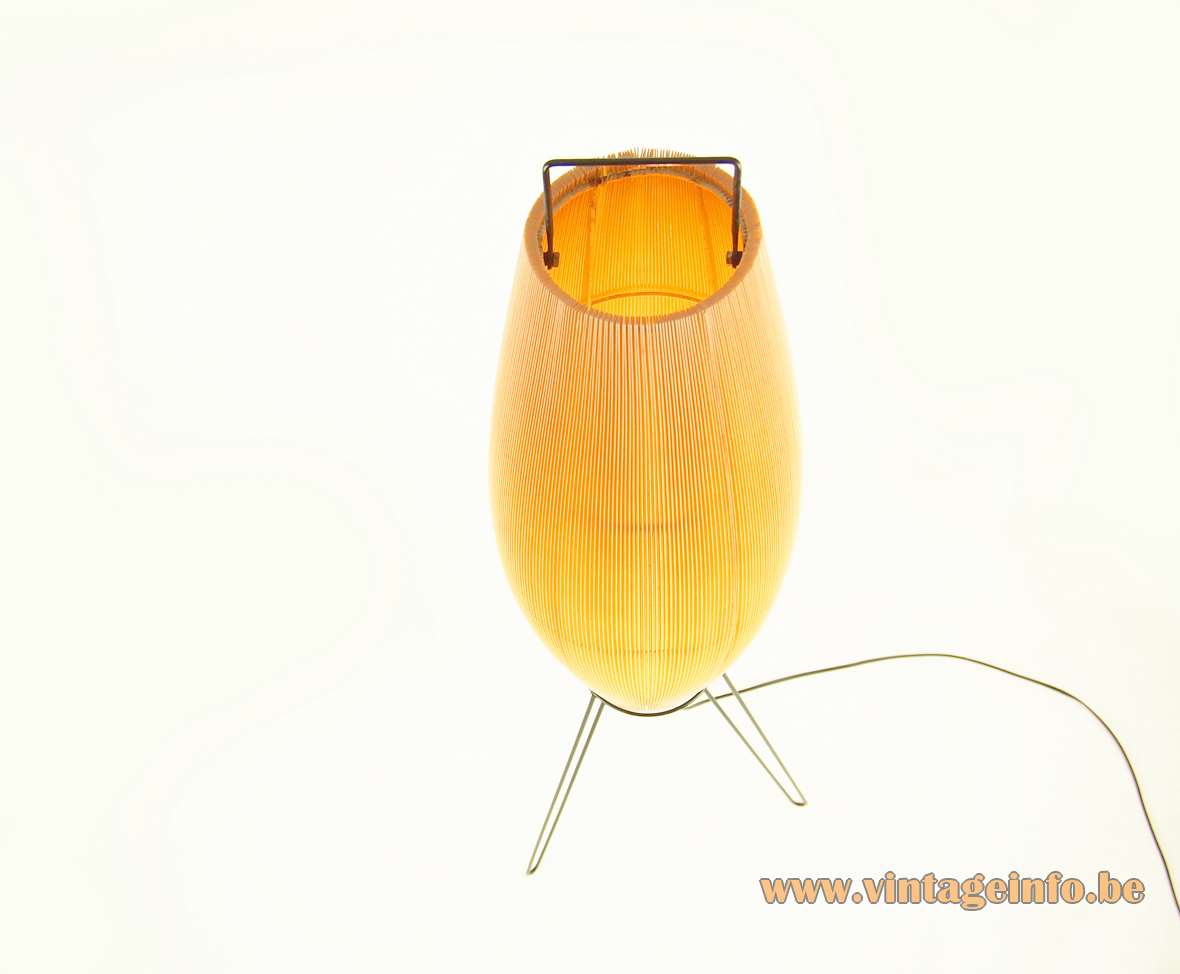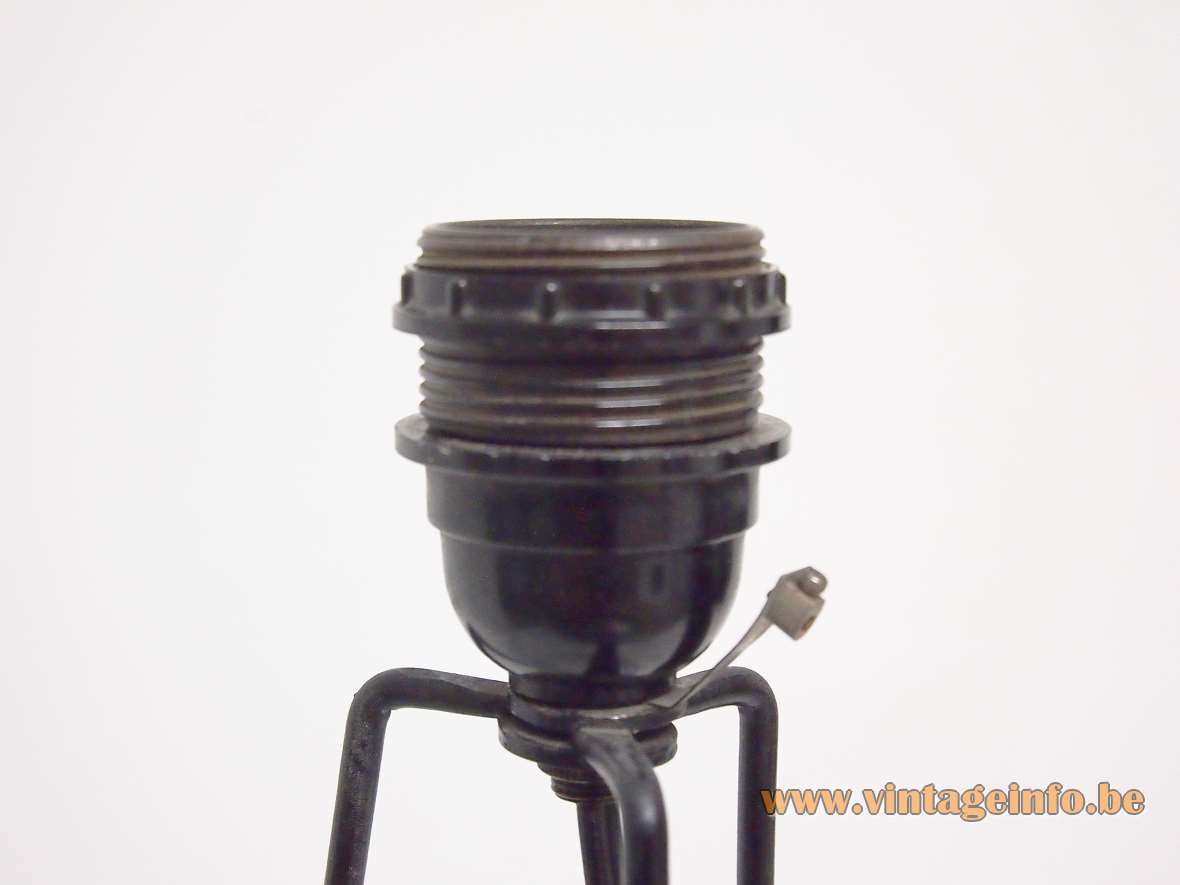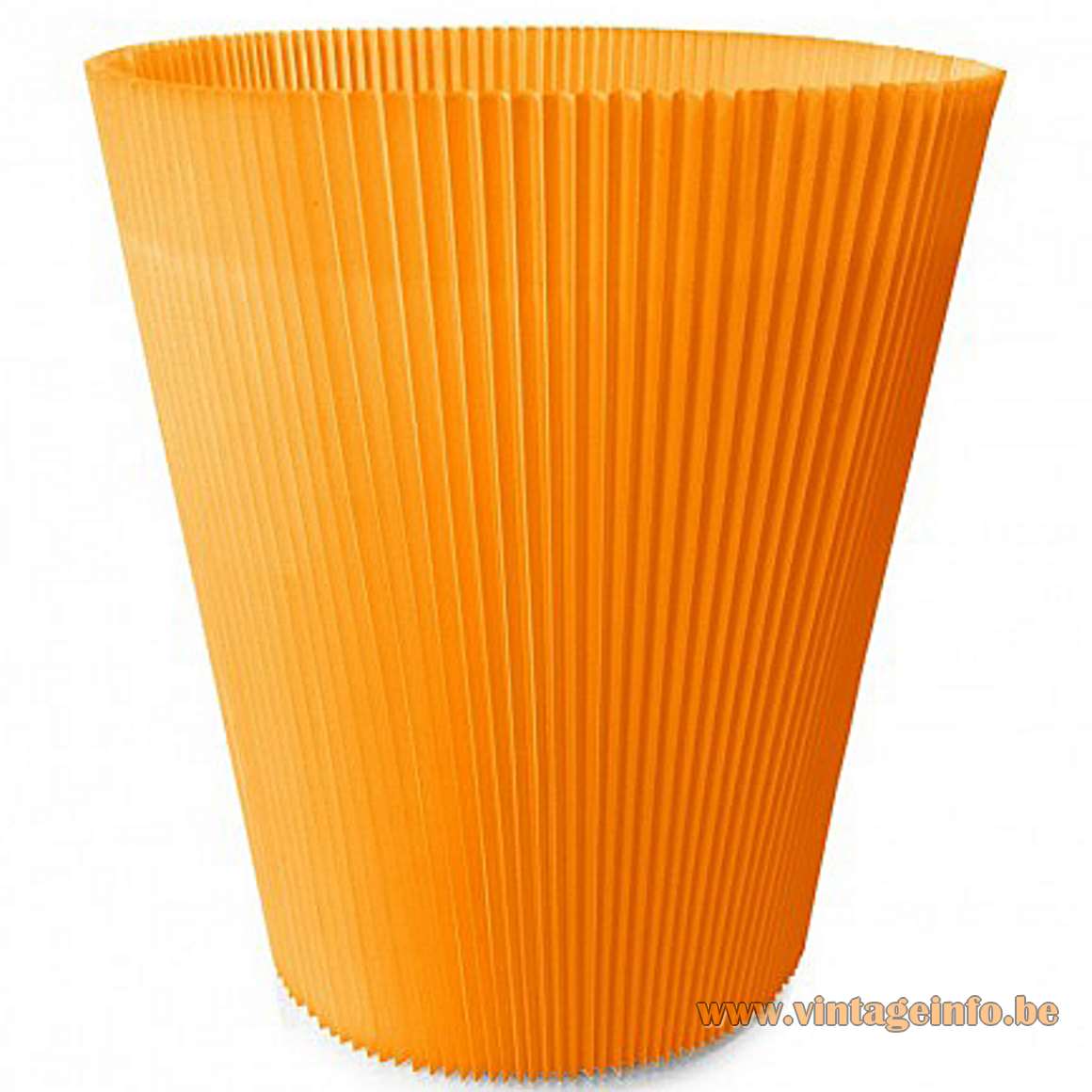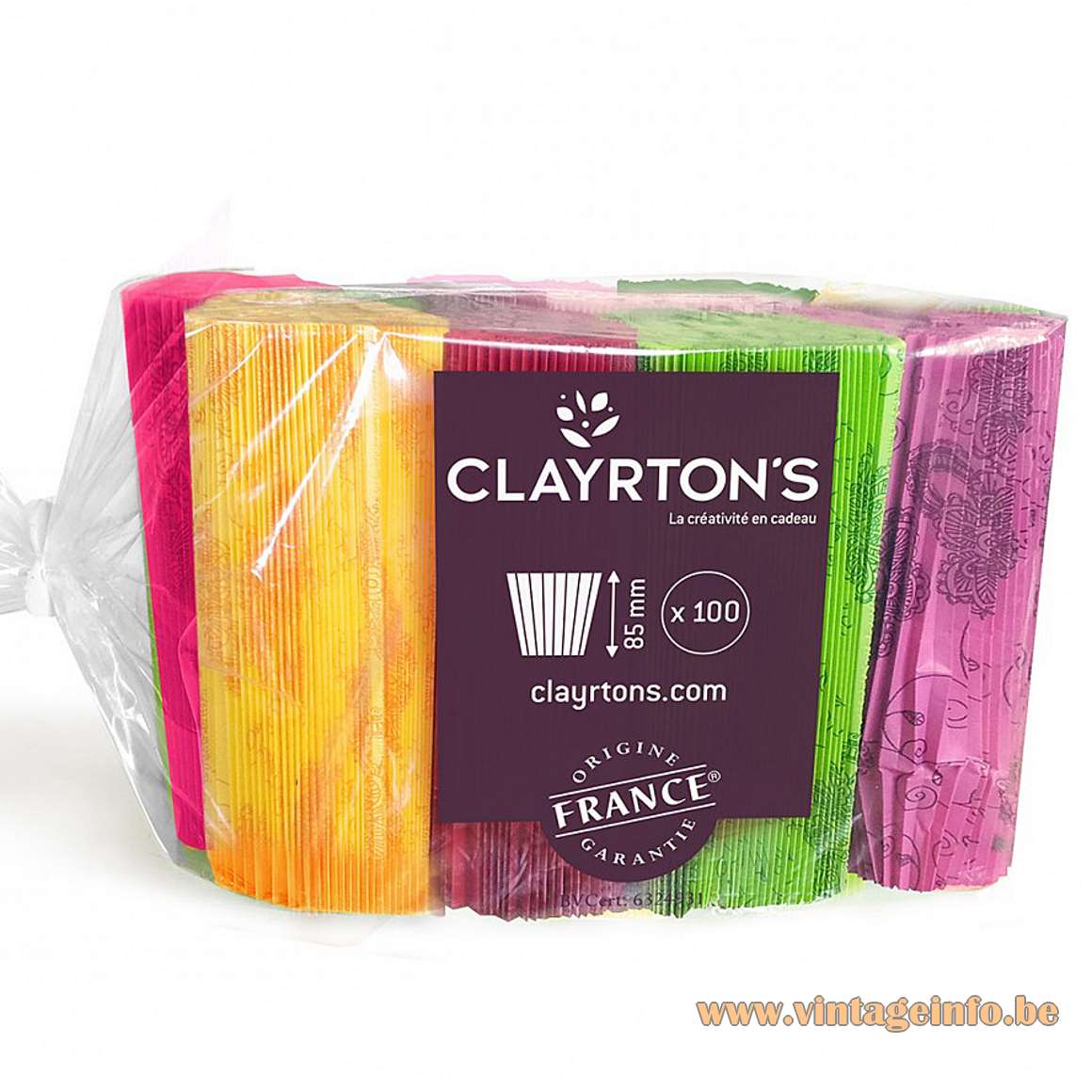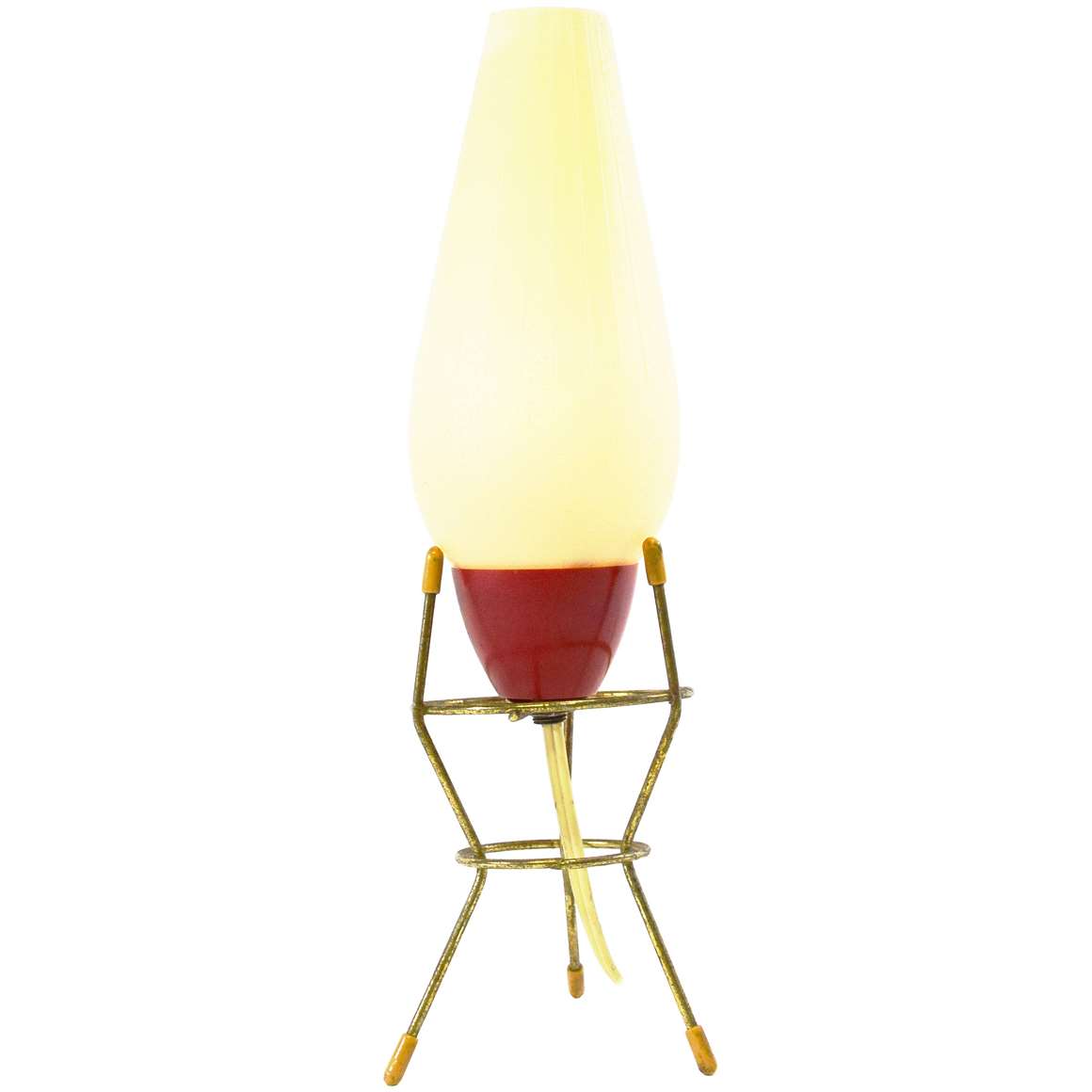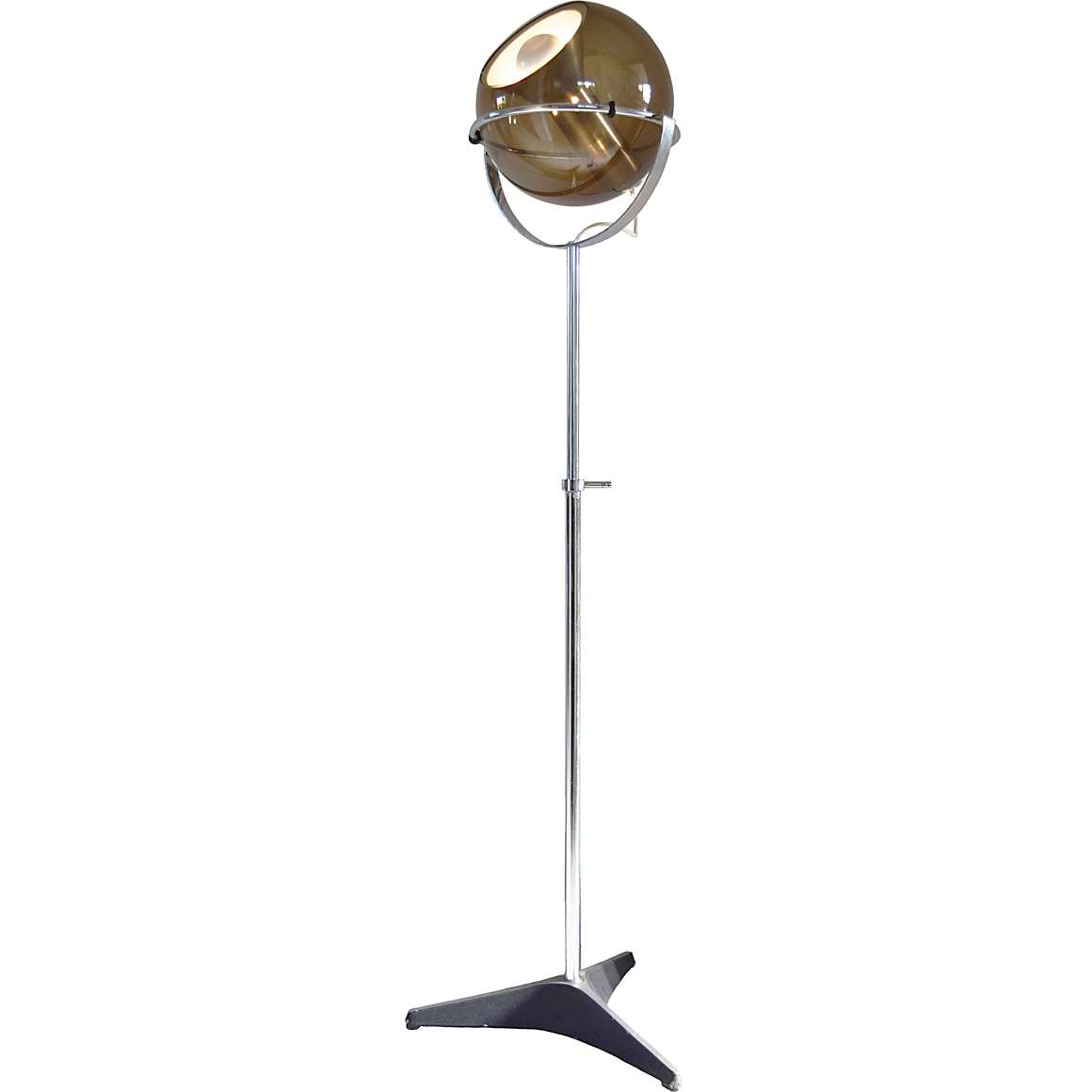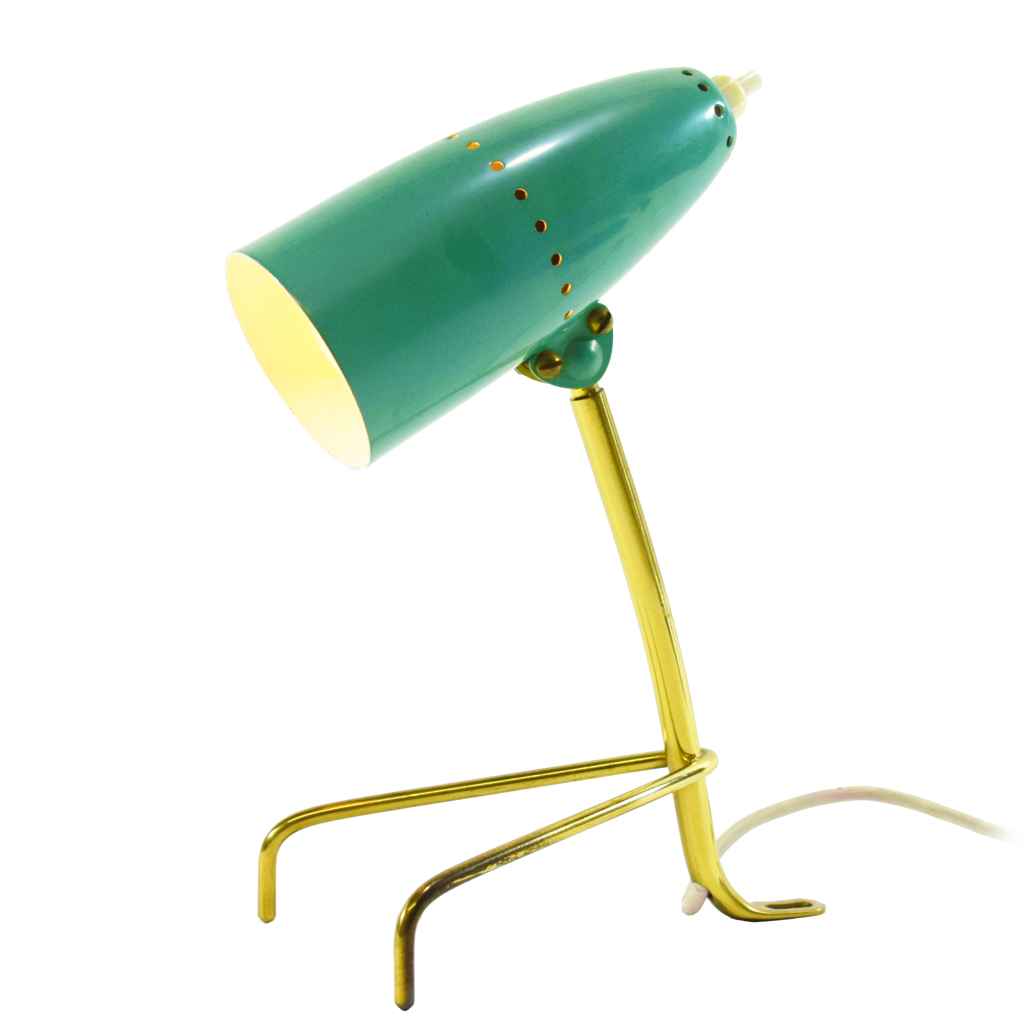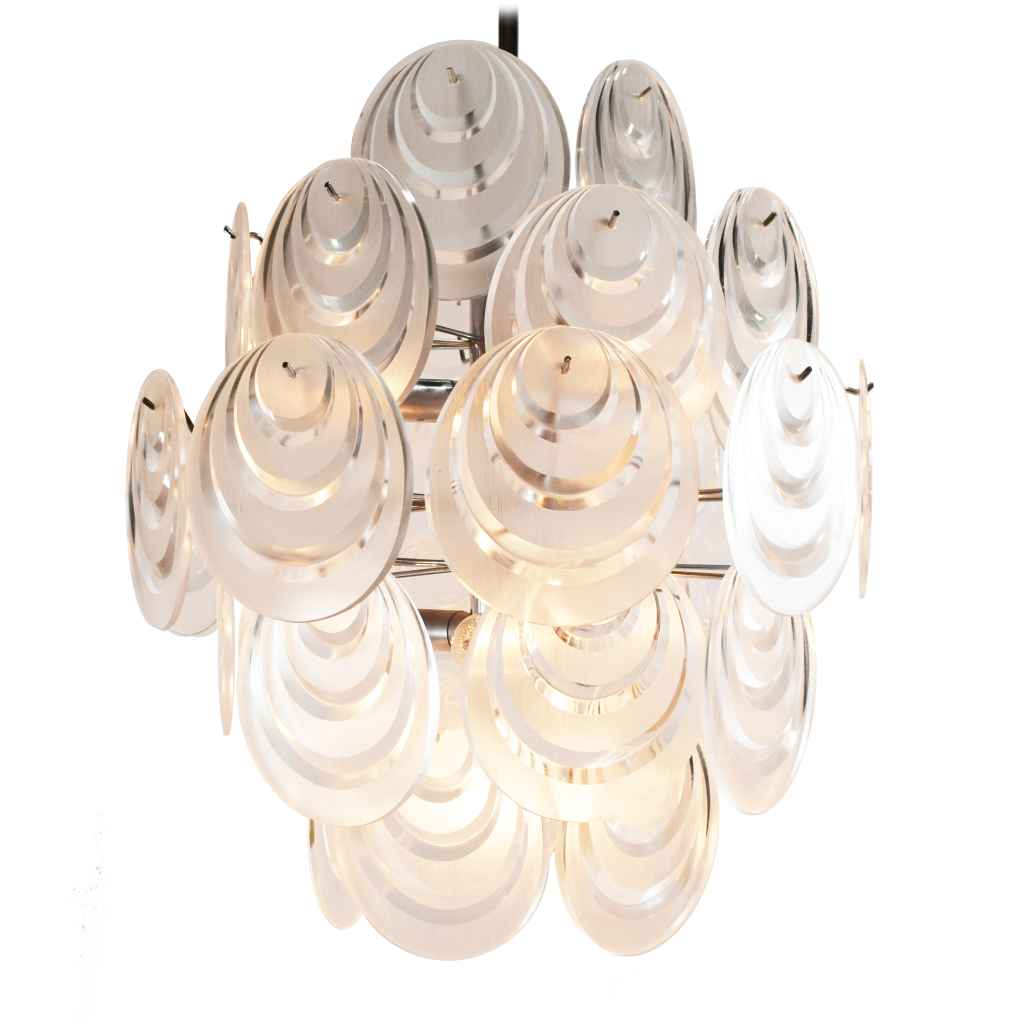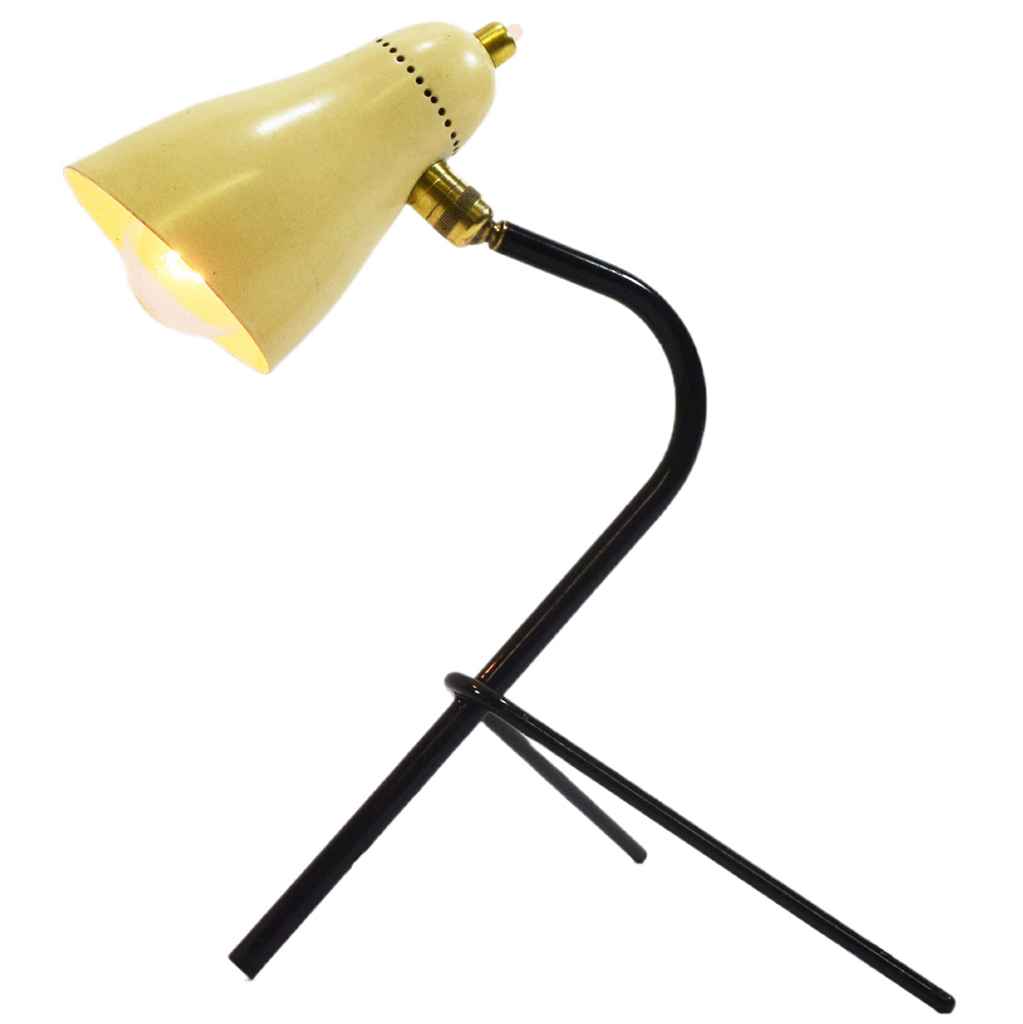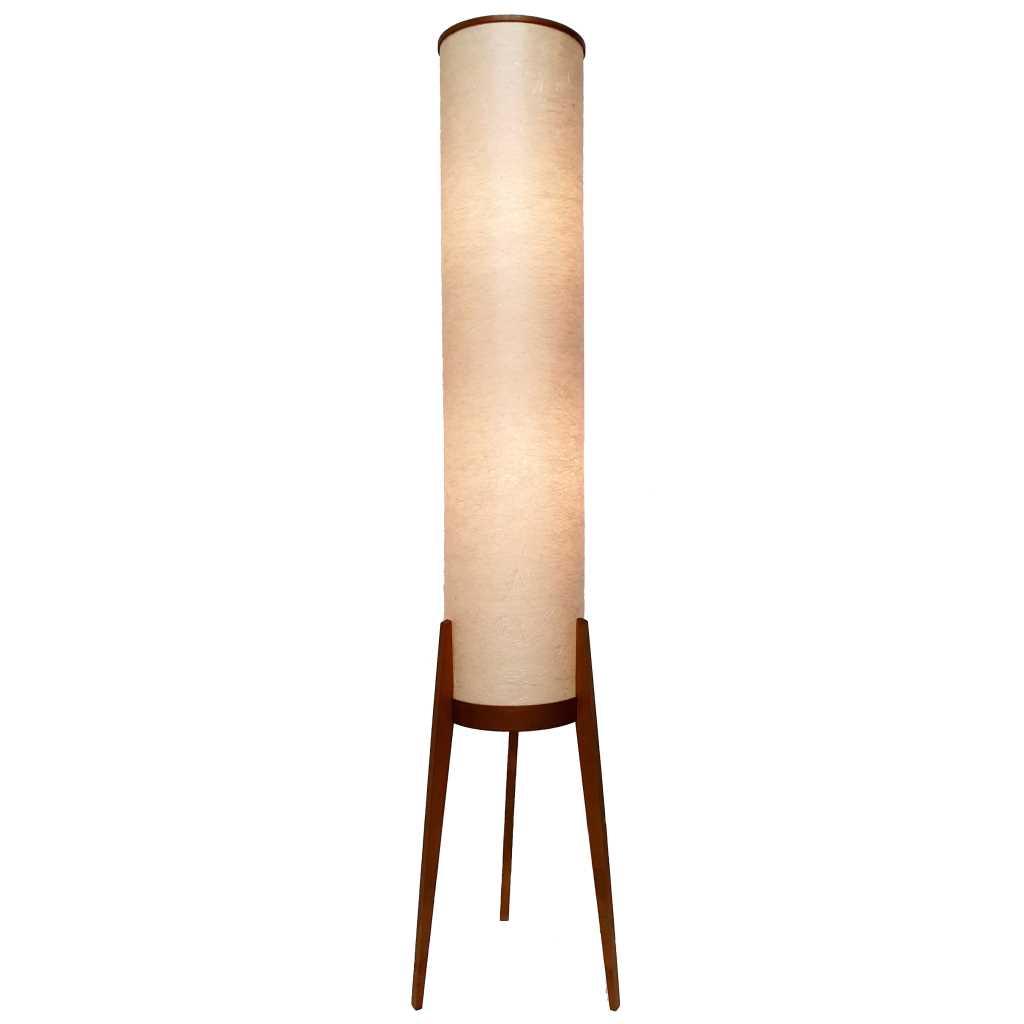Tripod Hairpin Rocket Floor Lamp
Materials: Black painted metal (iron) wire frame. Pleated, folded “cuff” orange-yellow plastic tubular convex lampshade. Black metal handle on top. Bakelite E27 socket.
Height: 106 cm / 41.73”
Width: 24 cm / 9.44”
Lampshade: 60 cm / 23.62”
Electricity: 1 bulb E27, 1 x 60 watt maximum, 110/220 volt.
Any type of light bulb can be used. Not a specific one preferred.
Period: 1970s – Mid-Century Modern.
Designer: To be appraised.
Manufacturer: Aro-Leuchte(n) GmbH, Arnold Licht GmbH, Gelsenkirchener Strasse 5, 46325 Borken, Germany – attributed.
Other versions: This tripod hairpin rocket floor lamp probably exists in several variations.
Unfortunately, no information can be found about this rocket floor lamp. It has all the looks of a 1950s rocket lamp, but the electric parts were made from the late 60s until the late 70s. In all probability it is a German lamp by Aro Leuchte.
Aro-Leuchte
Aro-Leuchten GmbH was founded in 1969 as a family business. It ended business in 2006. Not much to be found about the company. Today, the website is offline. The url was www.aro-leuchten.de. Mister Matthias Arnold was the last managing director.
The company was specialised in lamps made of acrylic in stead of glass. Many lamps were designed by other companies in the 1950s and 1960s. Aro-Leuchte produced the plastic versions in the 70s. You can find several examples on the Vintageinfo website. The company used both Aro-Leuchte as Aro-Leuchten on their labels. The website was also with the N.
Another German company named Marbach Leuchten sold several lamps made by Aro Leuchte. They are labelled with their ME logo.
Manchette
The “manchette” or “cuff” plastic is stretchable thanks to the folds, and therefore fits perfectly on the frame. This kind of plastic has been used for years to decorate flower pots and it is still available today.
The precursor of this cuff plastic was made of the very flammable cellulose acetate (Rhodoïd). It was often used for lamps in the 1930s, 40s and 50s. Rhodoïd is a French and English trade name. Other names used for cellulose acetate: Tenite, Zyl, Zylonite, Cellon. Acrylic (1930s) and PVC (1920s) were discovered before World War II, but was only widely used since the late 1950s.
Most rocket floor lamps from that period have a fibreglass lampshade. Hairpin legs appear at many companies in the 1950s and 1960s. Paul Mayen (1918 – 2000), an American/Spanish designer, was one of those designers that used hairpin legs for several lamps. Companies that used hairpin legs for furniture were amongst others: Pilastro, String, Knoll, Børge Mogensen, Pastoe…
Lamps with these type of lampshades are often attributed to the famous French designer Georges Léon Rispal. Rispal is best known for his original creations and biomorphic forms. For some lampshades he used similar materials.
This tripod hairpin rocket floor lamp was acquired in Germany, maybe it is a German lamp.
VLM Components
All the electric parts, except for the switch were made by VLM Components. VLM Components was founded in 1945 in Buccinasco, a small village near Milan, Italy. VLM Components is part of the Relco Group, founded in 1967. Today they are the owners of the brands Relco, Leuci, Relco Lighting, VLM Components and Segno. VLM Components became famous for the switches they produce which were designed by Achille Castiglioni in 1968.
Maybe the switch was a replacement later in time. It is a French switch produced since the 1950s and it is still for sale.
Links (external links open in a new window)
Switches in the Relco webstore
Manchettes flower pot – Google images
Clayrton’s – a producer of flower pot covers
Cellulose Acetate (Rhodoïd) – Wikipedia
PVC/Polyvinyl chloride – Wikipedia
Vintageinfo
Aro Leuchte tripod balloon floor lamp
